Sacredness, Reverance, and Creating Safety in the Play Therapy Room.
Play therapy is sacred.
It is the process of allowing a child’s unconscious emotional material—usually painful and too overwhelming to process on their own—and inviting it into metaphorical expression. It moves from the dark into the light. Whatever the child creates deserves to be revered: whether on a piece of paper, during a bunny picnic in a blanket fort, or with miniatures in the sand tray. It needs to be respected, tenderly held, and looked upon with warmth and compassion. I handle creative expressions with the same intentional care that I would offer to a child’s innermost self if I had the chance to see it in form. It’s my intention to reflect to the child that they are inherently lovable, enough, magical, special, and important. Beyond all the difficult behavior they display and the negative social responses they receive, beyond their trauma and heartache, beyond how they see themselves reflected in the eyes of the adults who are triggered by them, they are worthy of true reverence. Everyone needs to see delight in another’s eyes as they are looked upon.
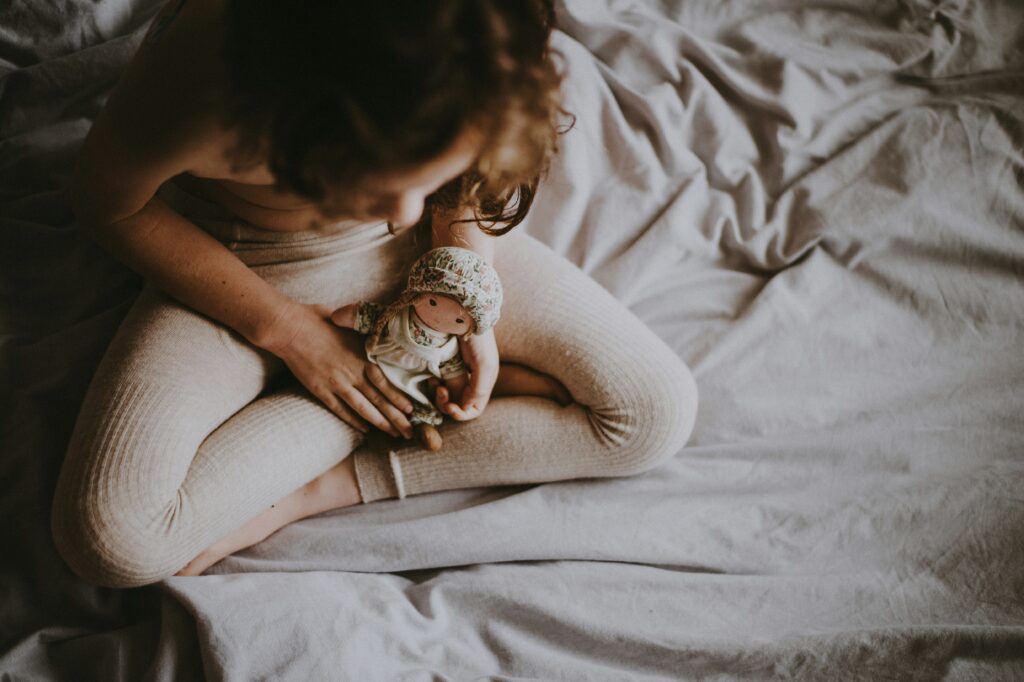
Because play therapy is sacred, the play therapy space is sacred too.
I am known to be very particular about my space. It’s true; I am. And I have very good reason.
The playroom has an important role in the therapeutic process. It has a meaningful job to do. For me, it has always been (almost) a living, breathing participant in our process. The room energetically holds me while I energetically hold the child and their expressions. The room is intentionally considered—from the lighting to the paint color, the arrangement of supplies, the comfort of the furniture, and the quality of the play materials. All the details contribute to the supportive, soothing energy of the room. The room is my co-therapist.
The playroom holds the energy of nature. It includes pieces of driftwood, rocks, crystals and stones, light filtering through the windows, potted plants, the sound of water from a fountain, and natural fibers like cotton, silk, and carded wool. In my last therapy space, I tended a beautiful shade garden of ferns and hostas under a huge maple that the children and I could see out the front bay window. The birds hopped from tree to tree and shared their sounds with us. We watched the snow flutter, the rain pour, the brilliant orange leaves fall, the blue expanse of sky, and the winds that came and went. Those elements supported and held our processes inside the room.
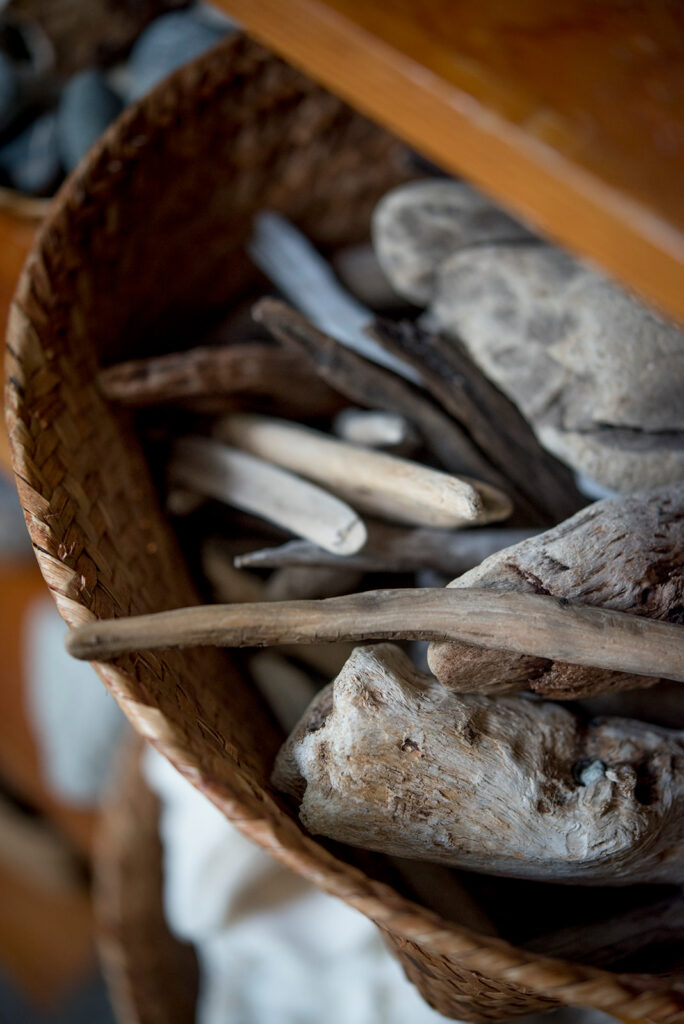

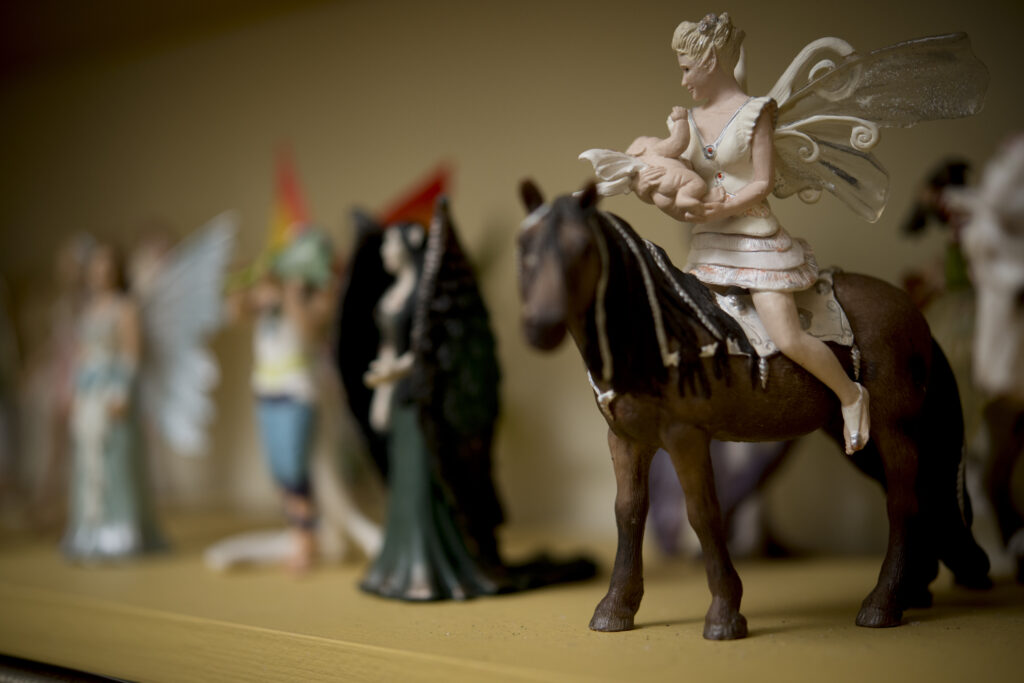
The play therapy space is an active participant in creating safety for the child. Not just in providing a safe environment for a child, which it does, but in creating a true, felt sense of safety inside the child. Relational Embodied Play Therapy offers children a path toward settling their nervous system, coming home to their body, and finding empowerment. The most sacred work, in my opinion.
I am particular about my room’s location, its lighting, the colors, the toys and contents, and how it is all organized. I put the room together with care during the initial setup, and it is maintained with great care every day. Each item has a place in the room, and after it is used, it is returned to its dedicated place. This contributes to the safety that children can feel. It makes the room trustworthy, dependable, and predictable. A child who endures a life of chaos needs a tidy reprieve. A child who needs that tiny plate of chocolate chip cookies or that little pink knit blanket, at a powerful turning point in their narrative, needs to know exactly where it is. A child who has suffered big changes and great losses in their life does not need to be impacted by a missing toy that has become an important symbol. Consistency contributes to safety.
The supplies in the room deserve to be treated with care because they are the vehicles by which the undigested, difficult, emotional material is shared, witnessed, transformed, and integrated. That little skeleton figurine has a big role to play in the haunted house. For many sessions he is confused and afraid until the little skeleton figures out that the house is not actually haunted, it just appears that way, and he is, in fact, transforming into a real human boy. It’s what he always wanted. That little skeleton is a sacred tool in this sacred process.
The room is curated to create something special for the children, but it also serves to support the therapist in many of the same ways. For the child to find a felt sense of safety, the therapist must feel safe. For the child to settle their nervous system, find ventral vagal tone, and regulate, they must be in the presence of a regulated therapist. For the child to widen their window of tolerance, the therapist must have a window that is wider than the child’s so the therapist can stay connected to their own Self in the presence of the child’s overwhelm. That room needs to include the colours, textures, items, smells, and images that the therapist finds grounding and supportive. From experience—difficult experience—I know that it can be hard to stay alive in this line of work. It is intense to sit with other people, perhaps children especially, while they wrestle with what has been unbearable for them. It’s heartbreaking. It can be exhausting. A therapist needs rest and a beautiful net of resources to maintain their aliveness. The room, the garden, the fountain, and the energy are there to serve the therapist too.
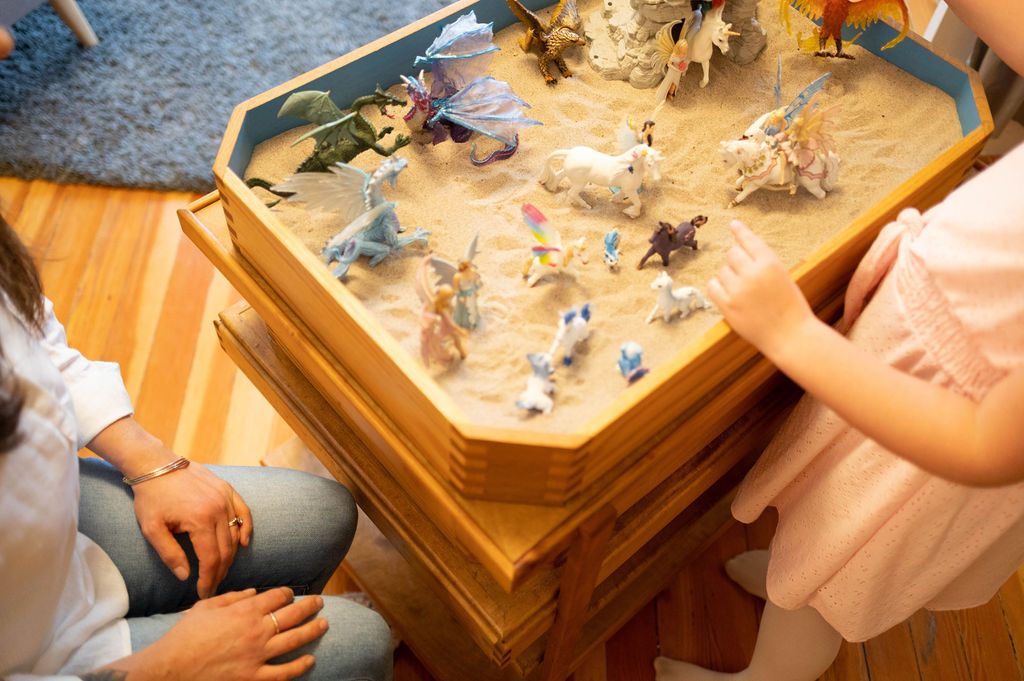
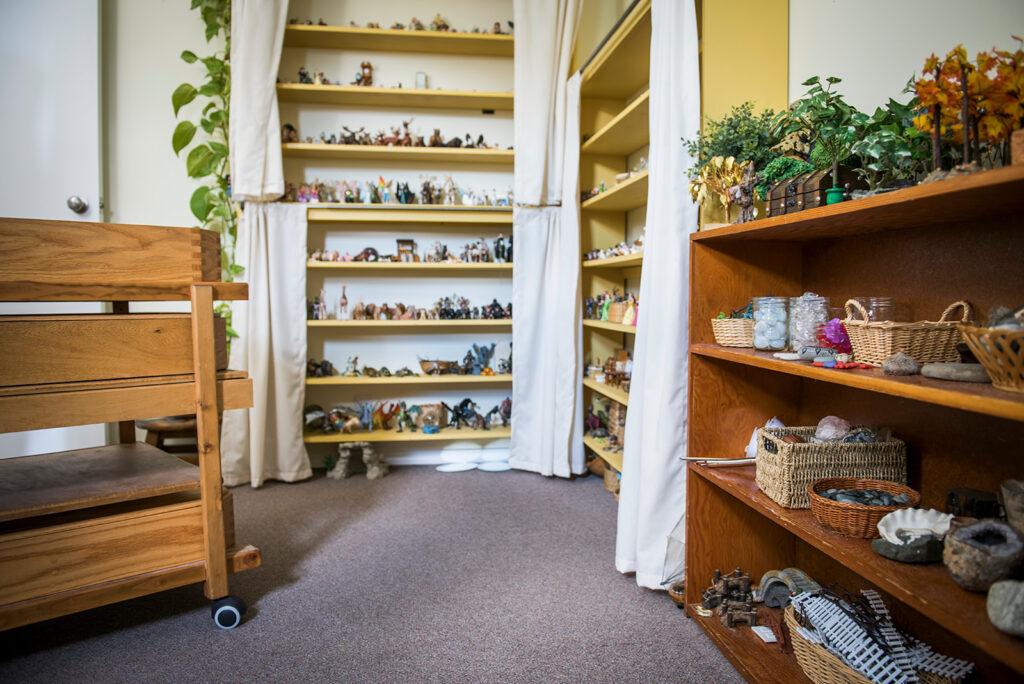
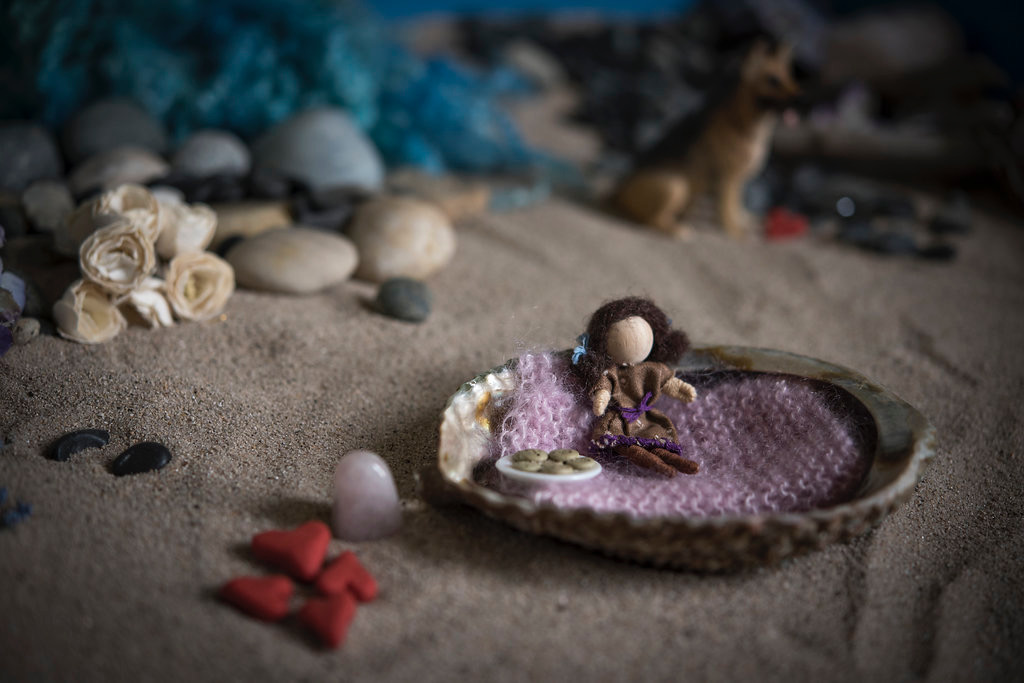
Thanks for reading,
Warmly,
Rachael ♡︎
Insights on Play Therapy, Neuroscience, and Professional Growth
Stay Connected
Join our newsletter to receive reflections, resources, and updates on the transformative power of play therapy and somatic approaches. Be the first to know about upcoming trainings, workshops, and consultations designed for therapists like you.
Sign up to join our newsletter.
Thank you!
You have successfully joined our subscriber list.
Relational Embodied offers therapist consultation and teaching about neuroscience-informed, non-directive play therapy, somatic approaches, and right-brained, relational therapy.
rachael@relationalembodied.com
back to the top
© Relational Embodied | All rights reserved | Privacy Policy | Terms | Website Design by Avenlee Collective
©Relational Embodied | All rights reserved
Privacy Policy | Terms
Website Design by Avenlee Collective